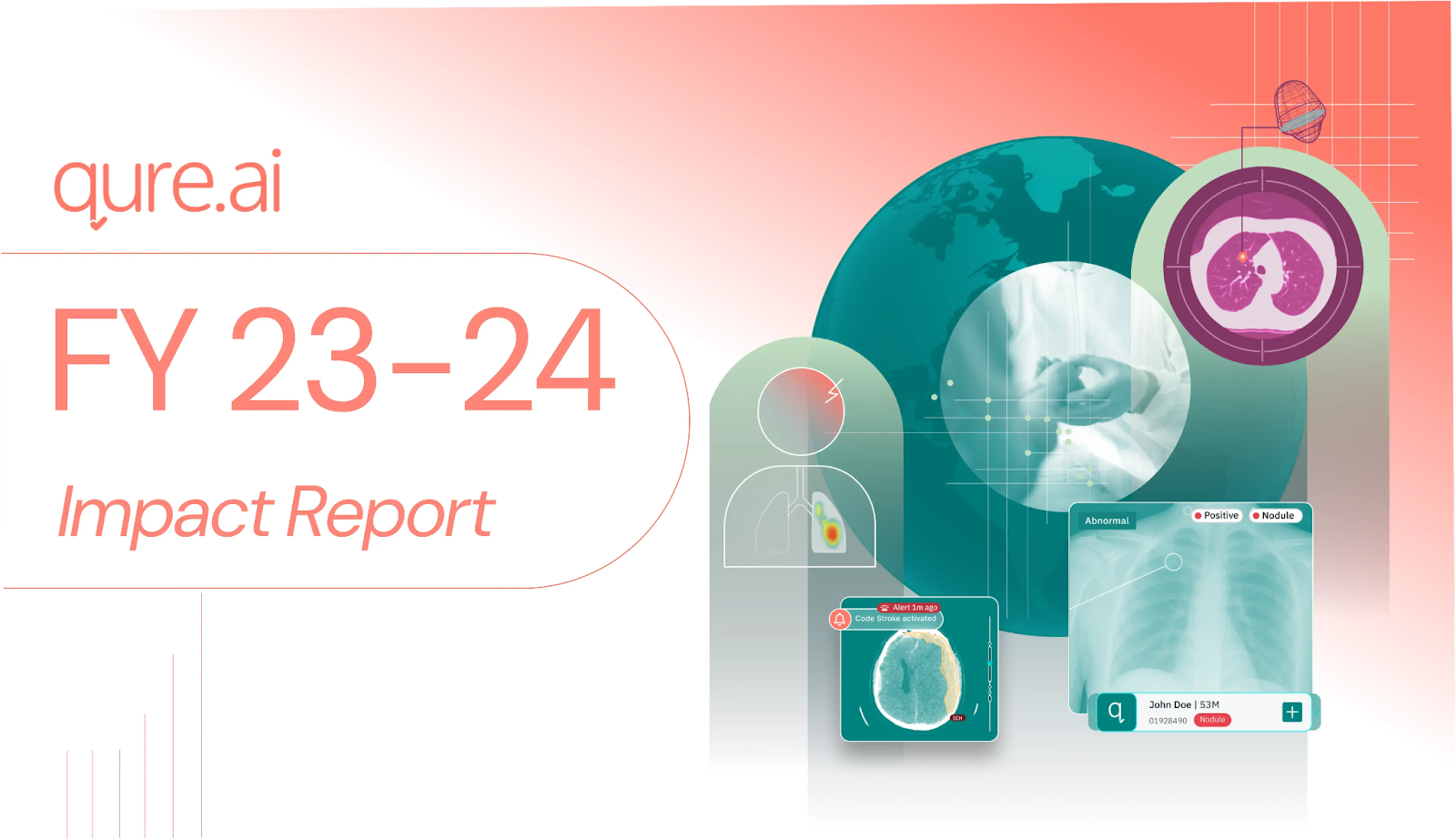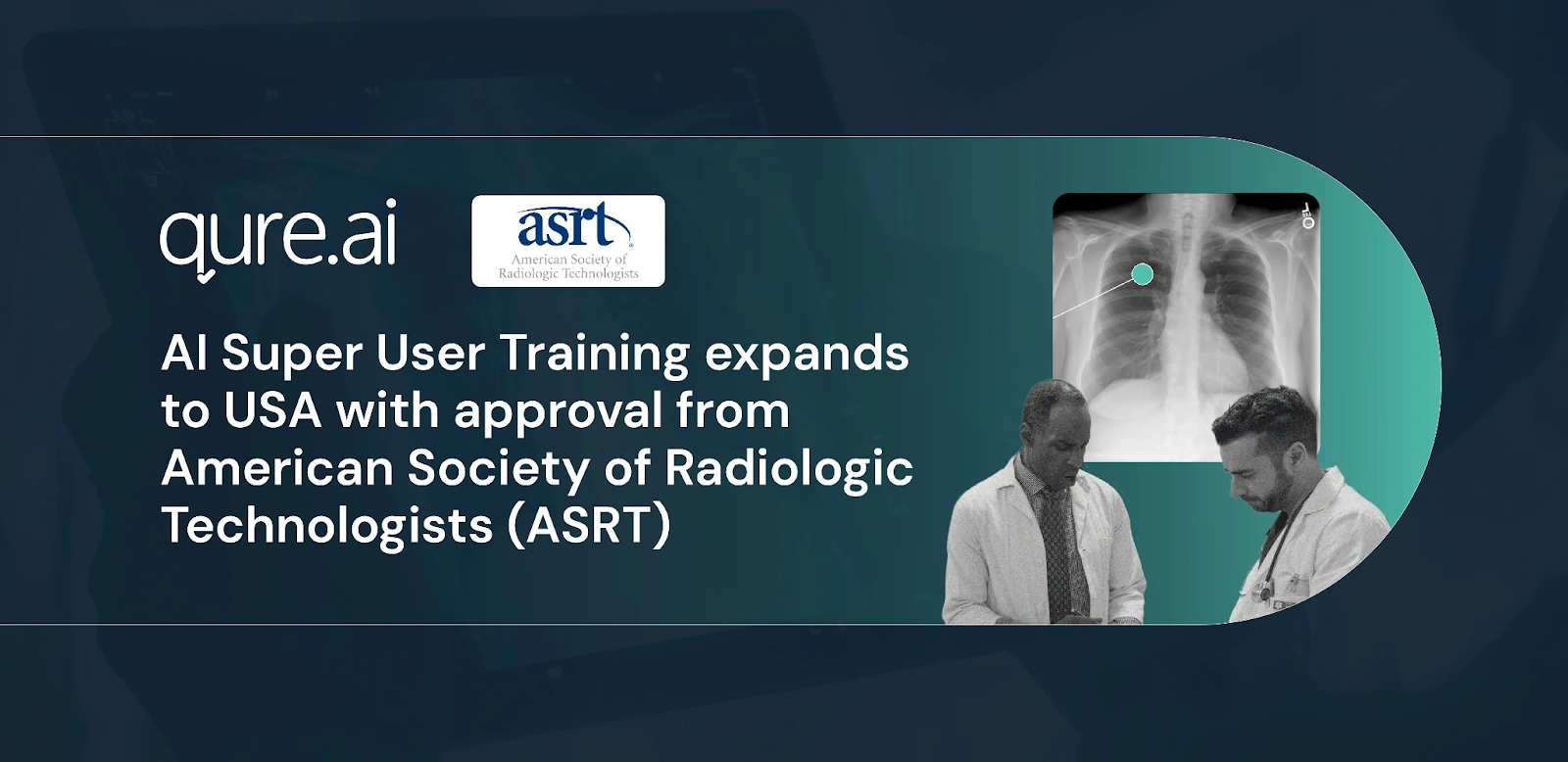
Source: Forbes INDIA, Frost & Sullivan
In a world where access to medical imaging is increasingly critical, radiology remains one of the most constrained resources in healthcare. According to the World Health Organization, low- and middle-income countries often face an acute shortage of radiologists—sometimes just one per million people. For patients, this can mean delayed diagnoses, missed early warning signs, or inadequate treatment.
In 2016, Prashant Warier, a data scientist, and Pooja Rao, a neuroscientist, founded Qure.ai in Mumbai with the ambition of closing this diagnostic gap. They asked a simple yet transformative question: Could artificial intelligence interpret radiology scans with accuracy and consistency, helping doctors detect diseases earlier and at scale? Their vision was shaped not only by technology’s potential but also by the inequities they witnessed in healthcare access. By combining Warier’s expertise in machine learning with Rao’s clinical and research background, the founders set out to design AI tools that could serve as a “digital radiologist”—affordable, and capable of reaching places where human specialists were scarce.

Qure.ai’s core technology stack is designed to address both high-end clinical needs and frontline public health. Its flagship product, qXR, is an AI tool trained to interpret chest X-rays across multiple pathologies. In 2024, Qure.ai achieved a landmark milestone: the FDA clearance of qXR-LN, a module for detecting lung nodules linked to early-stage lung cancer. This authorization made qXR-LN one of the first AI tools globally to be validated for such use.
The company’s portfolio extends beyond a single algorithm. qCT-LN Quant provides quantification of lung nodules in CT scans, while qTrack enables longitudinal patient management—essential for chronic conditions like tuberculosis (TB) and for lung cancer follow-up. By connecting these tools into what it calls a “continuum of pulmonary care,” Qure.ai moves beyond simple image recognition toward integrated clinical workflows.
What differentiates Qure.ai is its blend of scale and clinical rigor. Its algorithms have been trained on millions of annotated images and validated through peer-reviewed studies, making them trusted by both global health organizations and academic medical centers.

Scaling an AI diagnostic tool requires more than code—it requires credibility. Qure.ai has built this credibility through carefully chosen partnerships across continents.
In April 2025, University Hospitals Cleveland Medical Center in the U.S. announced it would integrate qXR-LN into its workflows, marking one of the company’s most significant entries into a major American hospital system. This came on the heels of a collaboration with Strategic Radiology, a consortium representing more than 1,700 radiologists across the United States, signaling broad adoption potential.
At the same time, Qure.ai has not forgotten its original mission of serving under-resourced regions. Partnerships with Siemens Healthineers and the Global Fund have enabled nationwide tuberculosis screening initiatives across Africa and Asia, where X-rays are often the first and only imaging modality available. In doing so, Qure.ai has positioned itself at the unusual intersection of cutting-edge Western medicine and global public health infrastructure.

The healthcare AI market is projected to surpass $200 billion globally by 2030. Competition is fierce, but Qure.ai has carved out a defensible niche by combining regulatory validation with scalable social impact.
Its efforts did not go unnoticed. In June 2025, Qure.ai was named to TIME’s “100 Most Influential Companies” list, joining a global roster of firms shaping industries beyond their borders. For an Indian startup in the traditionally conservative field of medical diagnostics, this recognition signals both credibility and momentum.

Behind the scenes, Qure.ai’s business model reflects the pragmatism of a healthcare company. Its products are sold to hospitals, diagnostic labs, and public health systems under licensing and subscription arrangements, often on a per-scan or enterprise contract basis.
In 2024, Qure.ai raised a strategic Series D investment from Merck’s Global Health Innovation Fund, marking a turning point as it prepared for deeper entry into the U.S. and European markets. With this round, the company’s total funding has exceeded $130 million, a figure that places it firmly in “pre-unicorn” territory.
Reports in 2025 indicate that Qure.ai is actively preparing for an IPO within the next two years. The move would make it one of the first Indian AI healthtech companies to go public on a major exchange, a milestone watched closely by both investors and competitors.

Unlike many startups racing toward valuation milestones, Qure.ai continues to emphasize impact. Its algorithms are deployed in more than 60 countries for tuberculosis screening, often in rural areas with limited healthcare infrastructure. In these settings, AI interpretation is not just a convenience—it is the only scalable solution to detect TB at the population level.
By maintaining this balance—enterprise adoption in the West and equitable access in the Global South—Qure.ai has created a differentiated brand that appeals to both investors and NGOs. Its positioning suggests that profit and purpose can indeed align.

Even with momentum, Qure.ai faces hurdles. Regulatory landscapes in healthcare AI are tightening, requiring ongoing validation studies and compliance. Physicians remain cautious about over-reliance on algorithms, raising the bar for clinical trust. Reimbursement policies, particularly in the U.S., will determine how widely hospitals can adopt AI tools within existing payment systems.
Moreover, as larger players like Google Health and Philips expand their AI portfolios, Qure.ai must defend its niche through speed, agility, and clinical credibility.

Qure.ai’s trajectory is emblematic of a broader shift in healthcare: diagnostics are no longer limited to human expertise, but increasingly augmented by machine intelligence. By blending scientific rigor with commercial pragmatism, and by balancing public health impact with private-sector growth, Qure.ai offers a model for what the next generation of medtech companies could look like.
The company’s future hinges on two paths running in parallel—IPO-driven global expansion and sustained commitment to underserved communities. If it succeeds in maintaining both, Qure.ai may not only redefine how we diagnose disease but also set the gold standard for how AI can transform healthcare without leaving anyone behind.
0 Comments